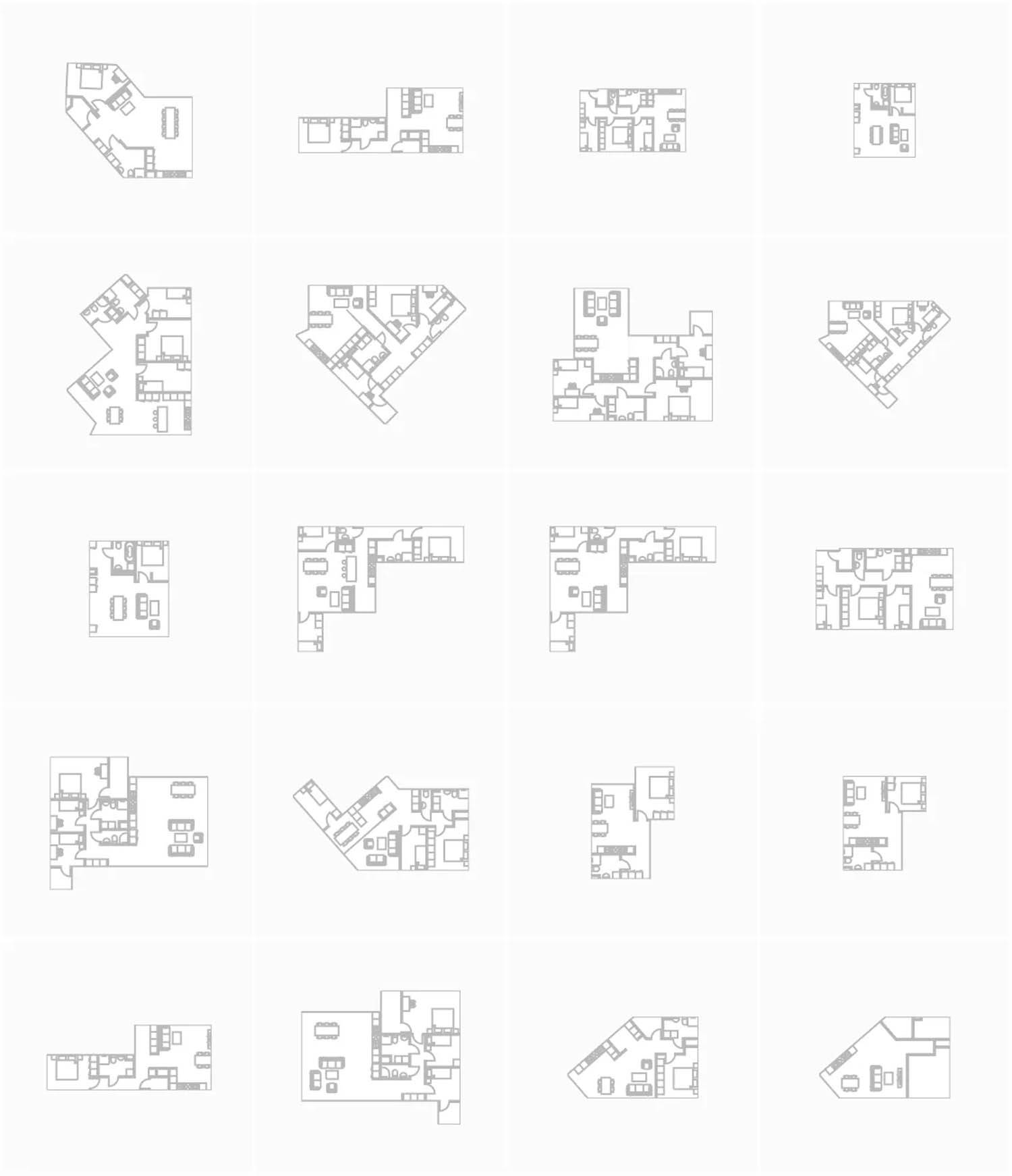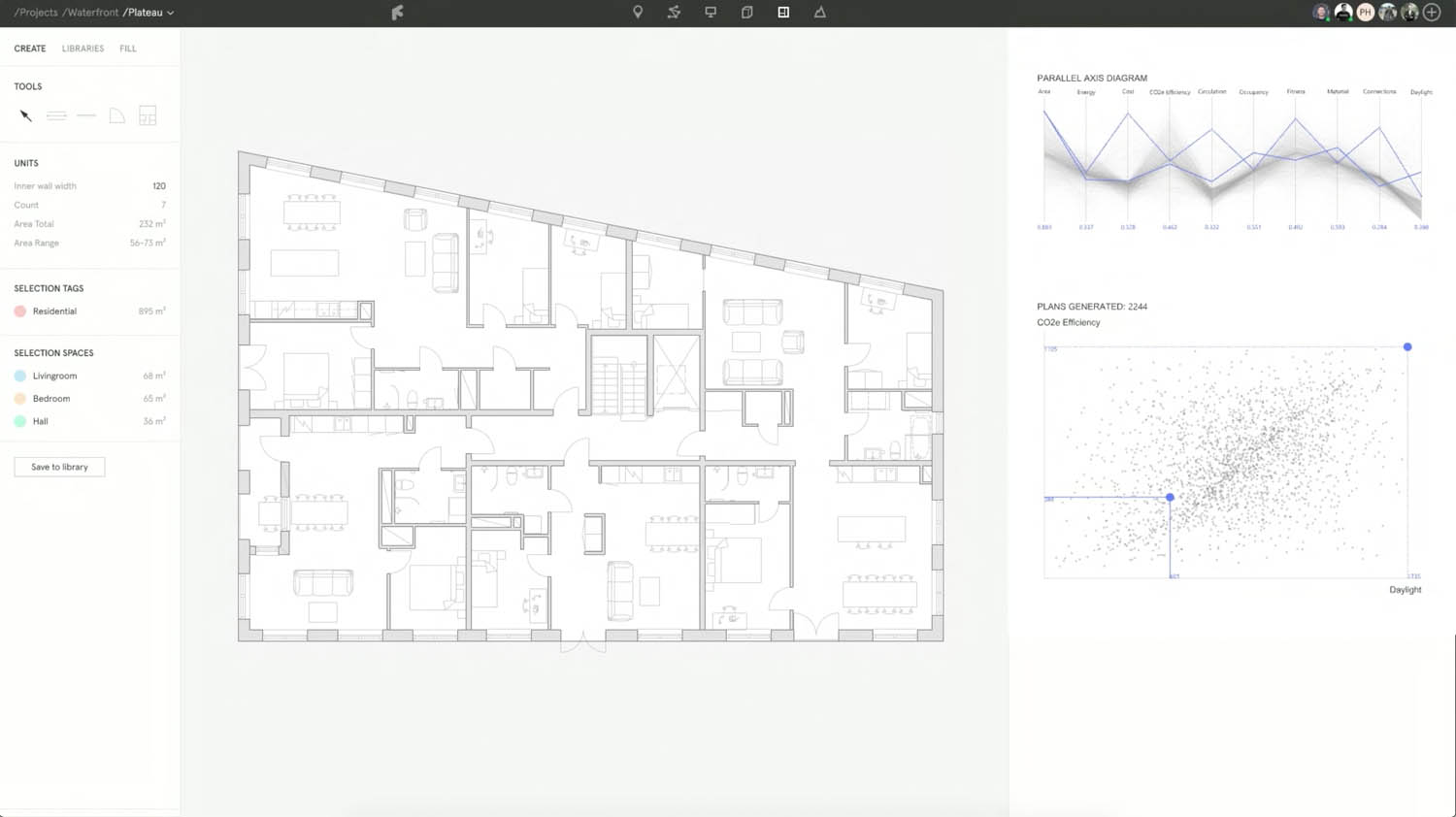Established in 2019, Finch3D is a parametric design tool designed by architects, for architects, which automates the generation of floor plans, provides feedback and optimises designs for code compliance
Based in Malmö, Sweden, Finch was founded by Pamela Nunez Wallgren, Jesper Wallgren and Martin Kretz. As with many start-ups in the AEC industry, the idea for Finch3D came directly from the founders’ need for better tools in their own architectural practice.
Since then, the company has expanded, reaching beyond its initial aims to become a computational cloud platform for fast design iteration. It is primarily aimed at early-stage project development using AI, constraints-based design and simulation with graphing output, and supports cloud-based team collaboration.
In action, Finch3D is really very impressive. Highlights include its support for massing, layouts, storey design, and space planning, which comes with dashboard-like feedback on areas, light and CO2. Project information can be generated and saved in a common library or as plans, rules and objects (such as furniture).
Pamela Nunez Wallgren explains that her firm started to develop in-house digital tools to sharpen its offer. One of these, a floor plan generator plug-in for Rhino, went viral after it was featured in the Financial Times, ArchDaily and Dezeen. This got a huge response from industry professionals wanting to buy the tool themselves. The Finch team members quickly saw that they were solving a problem not only for themselves, but also for the many others who find that early-stage design involves a great deal of manual and repetitive work.


“A lot of these decisions are based on intuition and experience,” she says. “And what we could provide was a more datadriven approach, providing the possibility to explore more ideas for iteration to find the best-suited for specific sites.”
Finch gets serious
With thousands signing up for early access to Finch, things got serious. So the team behind it partnered with software developer Martin Kretz, who brought to the process a passion for maths and algorithms. A few more developers soon followed and began work on the Finch3D platform.
Today, the software is no longer a Rhino plug-in, but a standalone application with strong connections to commonly used design software products. “We have a two-way native stream to Rhino, to Grasshopper, to Revit, so users can stay in their existing flow, but benefit from working in Finch3D using our generative tools,” Nunez Wallgren says.

This means that users can make changes to buildings in Revit and then get direct data feedback through Finch3D, so computational assistance is always connected to projects as they progress.
“Finch3D is for early-stage design – we say from first sketch through design development until schematic design. Essentially, what we do is to explore volume and populate that volume with plans. The user can assign rough rules to these plans, such as, ‘Between these spaces, X should be generated’, or, ‘In this space, we need a minimum of X amount of square metres’, or, ‘This space needs at least X amount of daylight’,” she explains.
“Then, when we run our optimisation algorithms, Finch3D can take these graph rules into account. It’s why we can generate detailed floor plans with very high precision. The rules are completely down to the user and the graph is always working behind the design. The user is not building the graph, that is generated automatically. And the graph’s job is basically to map out the architecture or the building to understand the relationship between different functions for different spaces and different objects to generate an optimal floor plan.”

Automation impact
With so many AI-based and/or generative tools coming onto the market, what does Nunez Wallgren expect the impact of automation to be on the industry?
“I still believe that there will be an important role for architects to play in the future. I just think that they will have better tools to support them,” she responds. “Architecture is very subjective. The architect plays an important role and is in the middle, between a lot of different interests and different stakeholders at the early stage. I think their workload will become easier, but I don’t think they will become redundant.”
In early November 2022, Finch raised €2.5 million in seed funding, in a round led by Inventure and with repeat investments from business angels Peter Neubauer (co-founder of Mapillary and Neo4j) and Emil Sjödin (co-founder of Refined). Hopefully this injection will accelerate development and hasten the launch of the first commercial version of its product.
For now, Finch is working with strategic customers, including White Arkitekter and Herzog & de Meuron, and boasts a waiting list of 12,000 would-be customers. You can join the waitlist for early access here.
Main image: Rhino linked to Finch








